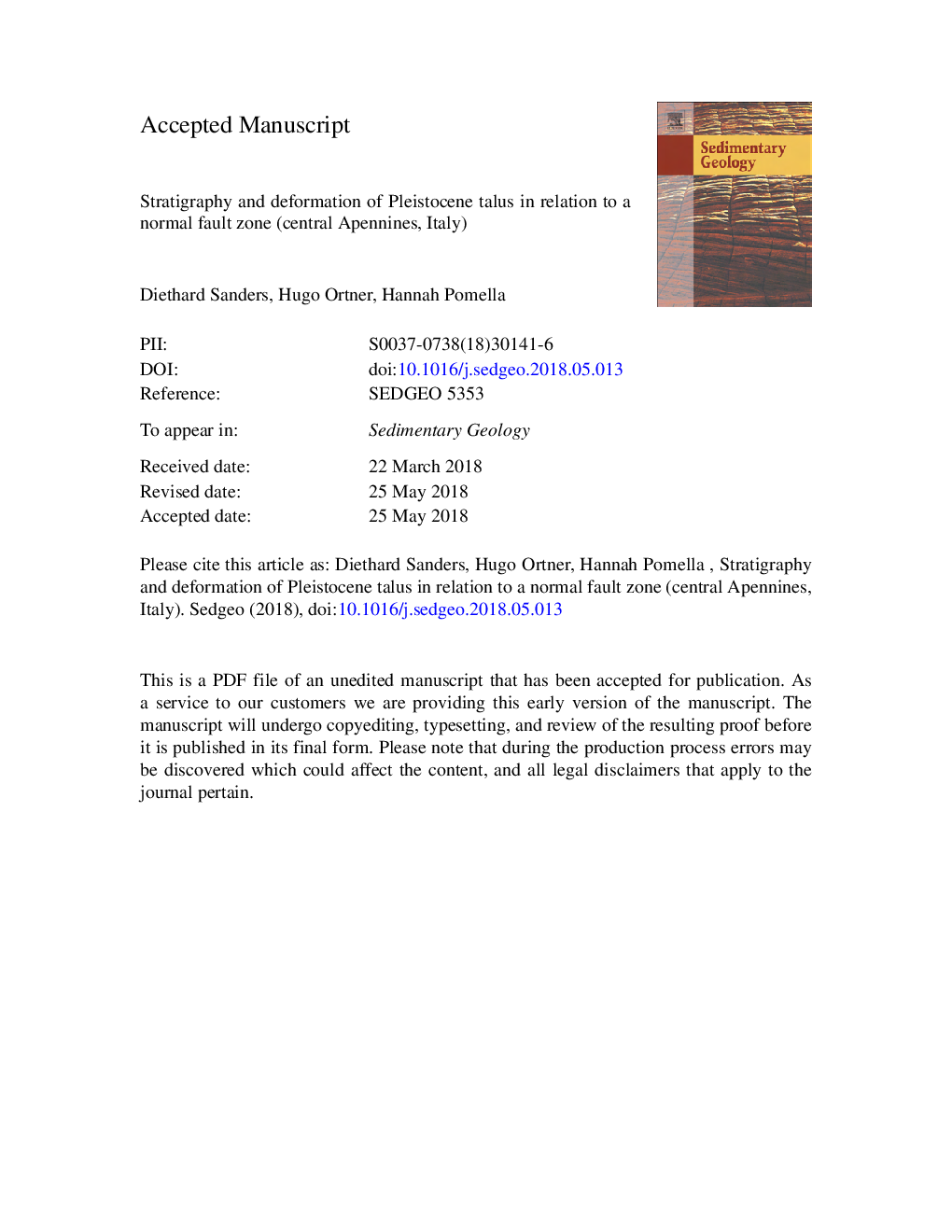| Article ID | Journal | Published Year | Pages | File Type |
|---|---|---|---|---|
| 8908468 | Sedimentary Geology | 2018 | 62 Pages |
Abstract
The core of the normal fault is an ultracataclasite that (i) shows different degrees of diagenetic recrystallization into micro- to pseudospar, and (ii) that is riddled with solution pores fringed or filled with successive 'generations' of calcite cement. These cements are locally sharply capped along discrete levels, and overlain by ultracataclasite with floating chunks of calcite cement crystals ripped off during increments of faulting. Stable isotopes of oxygen and carbon indicate that the ultracataclasites lithified under influence of meteoric waters, but at variable degrees of rock buffering; the calcite cements within the talus breccias and the flowstones along fractures, in turn, precipitated from meteoric-derived waters with low to negligible rock buffering. The structural juxtaposition of ultracataclasites (probably formed in 1-2â¯km depth) with talus breccias indicates that the preserved fault/talus ensemble records only the terminal phase of total faulting. The interstitial cements in talus, the flowstones on fracture walls, and the cements in ultracataclasites should be datable with the 234U/230Th errorchron method. This promises to be a new approach to derive age constraints on talus cementation and fracturation, and on palaeoactivity and final dormance of normal faults.
Related Topics
Physical Sciences and Engineering
Earth and Planetary Sciences
Earth-Surface Processes
Authors
Diethard Sanders, Hugo Ortner, Hannah Pomella,
